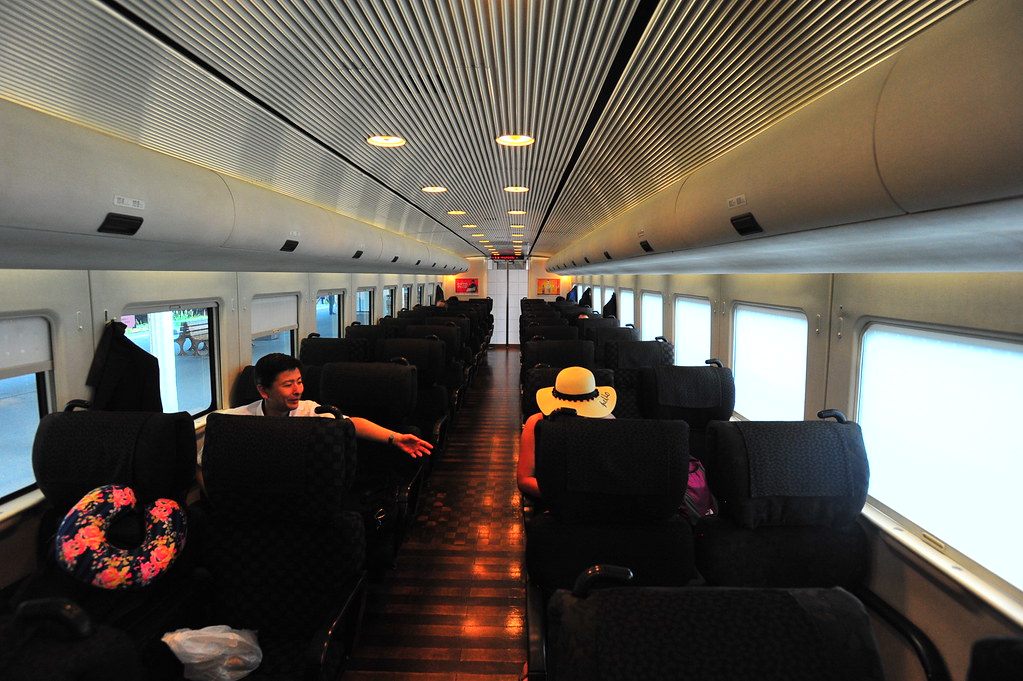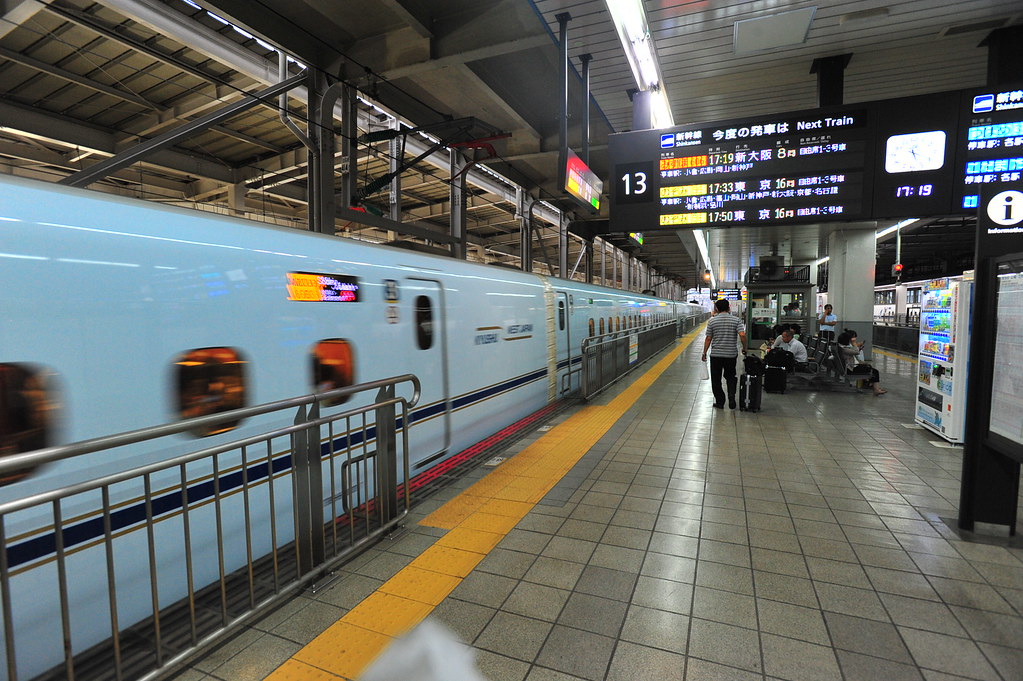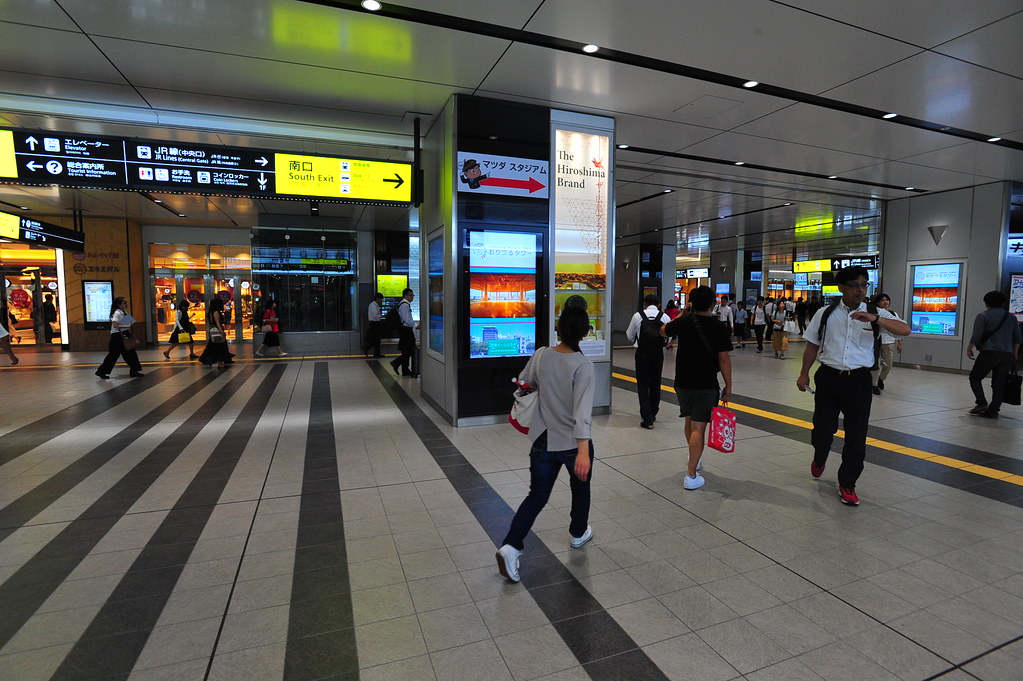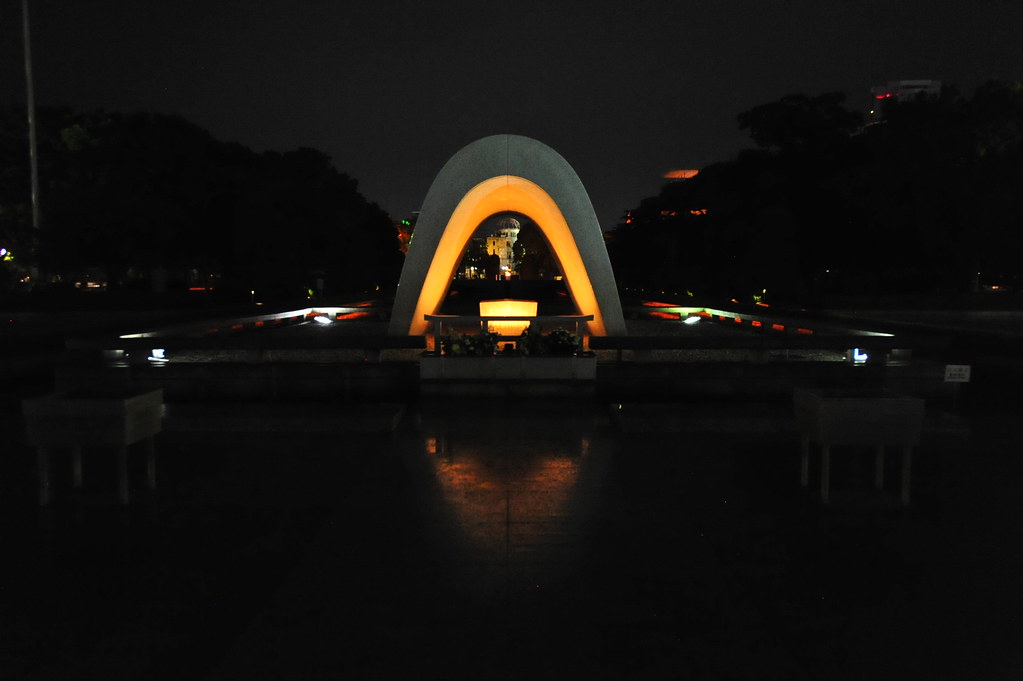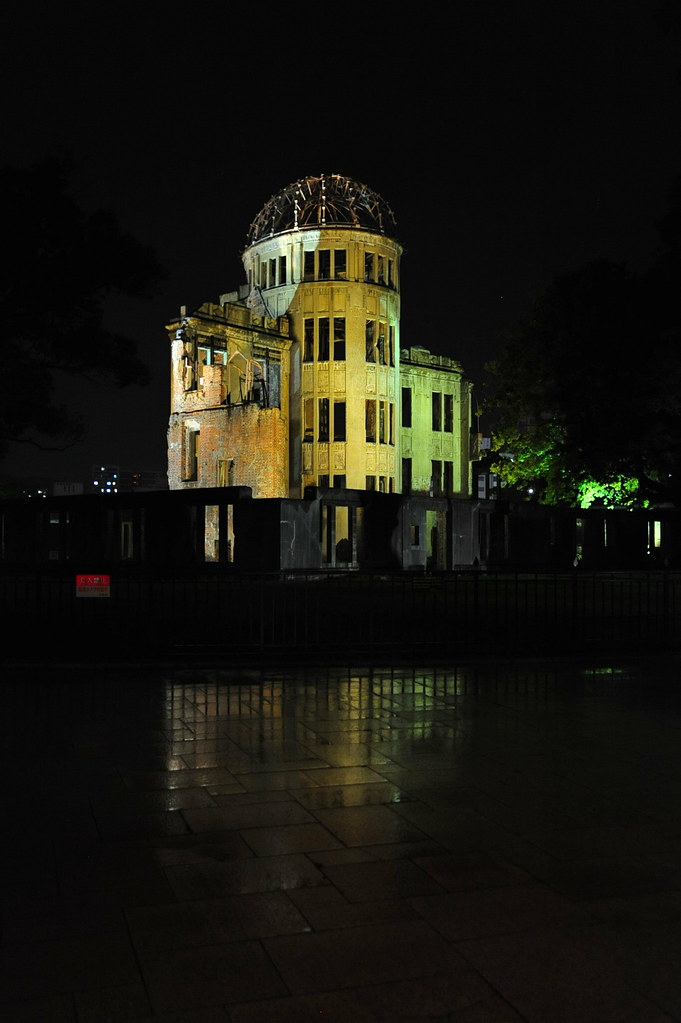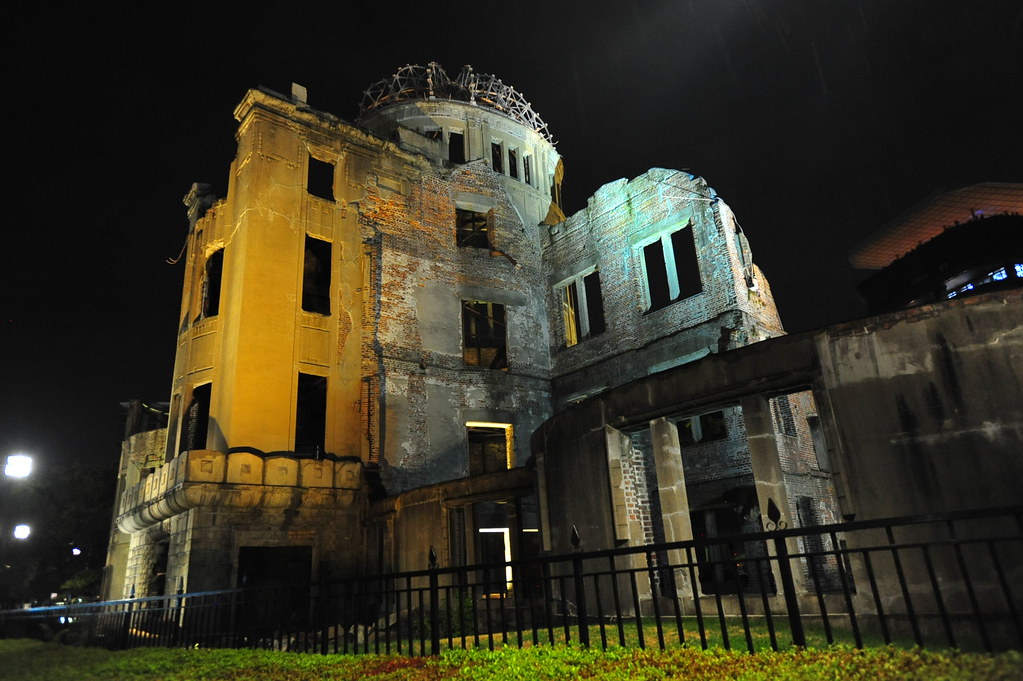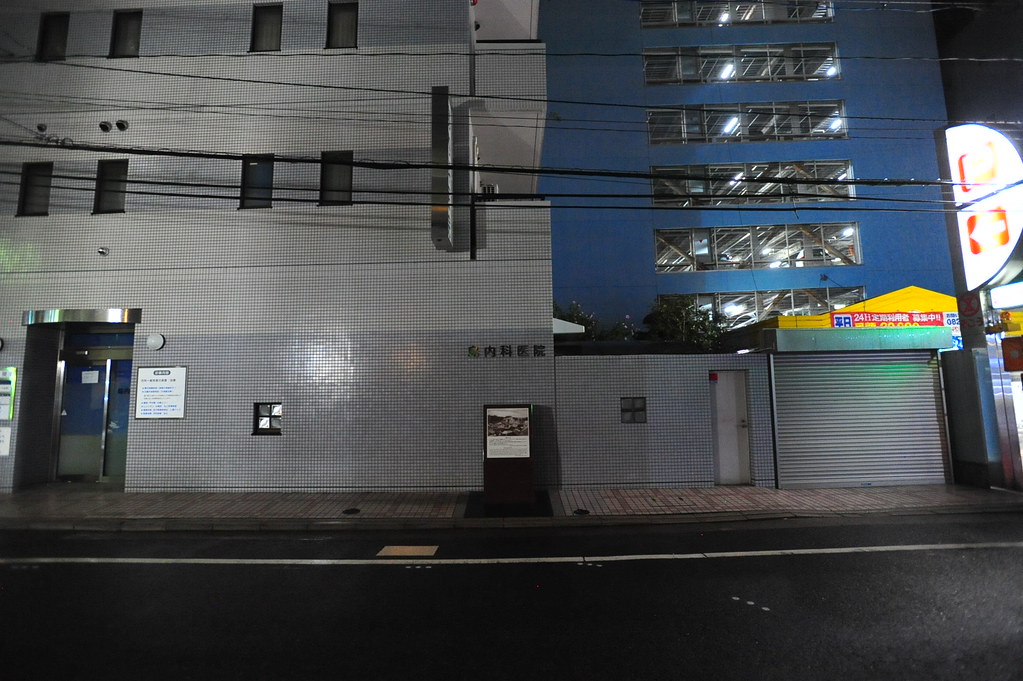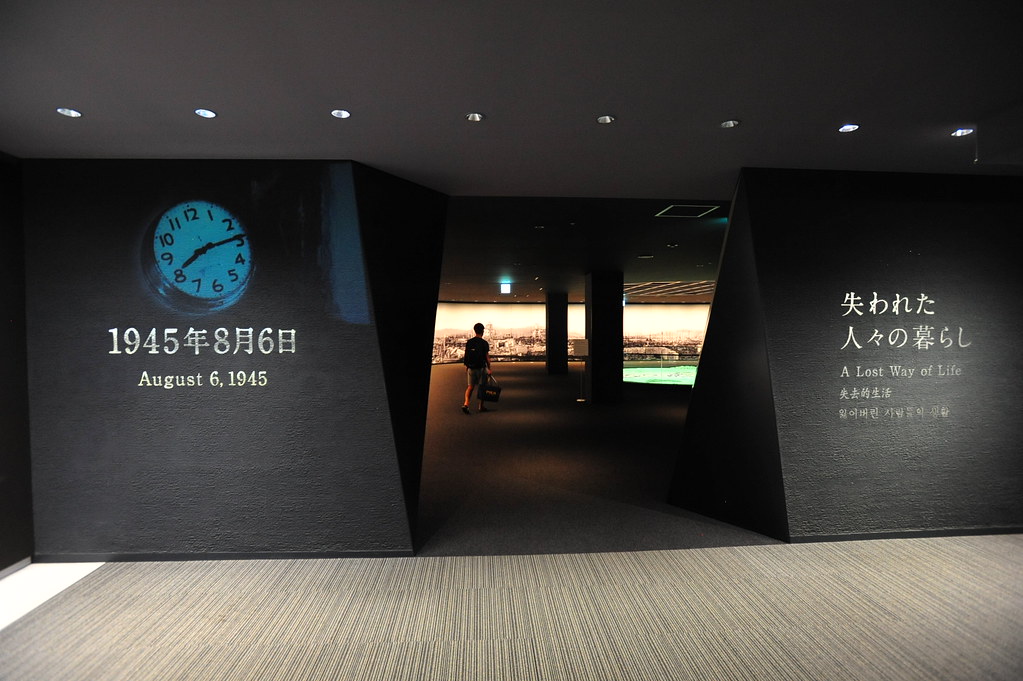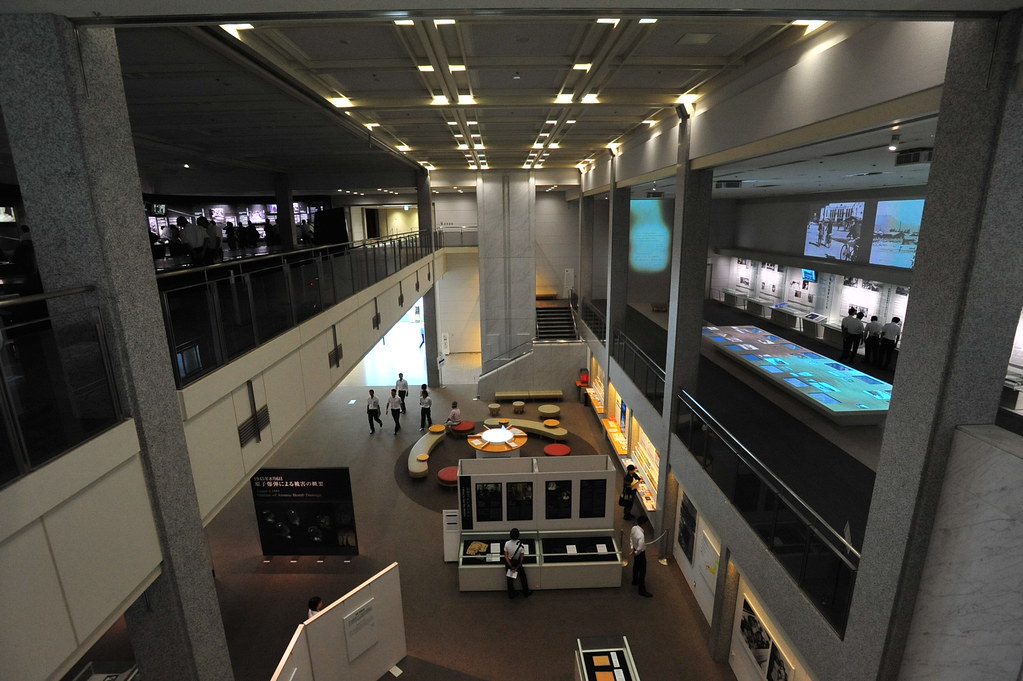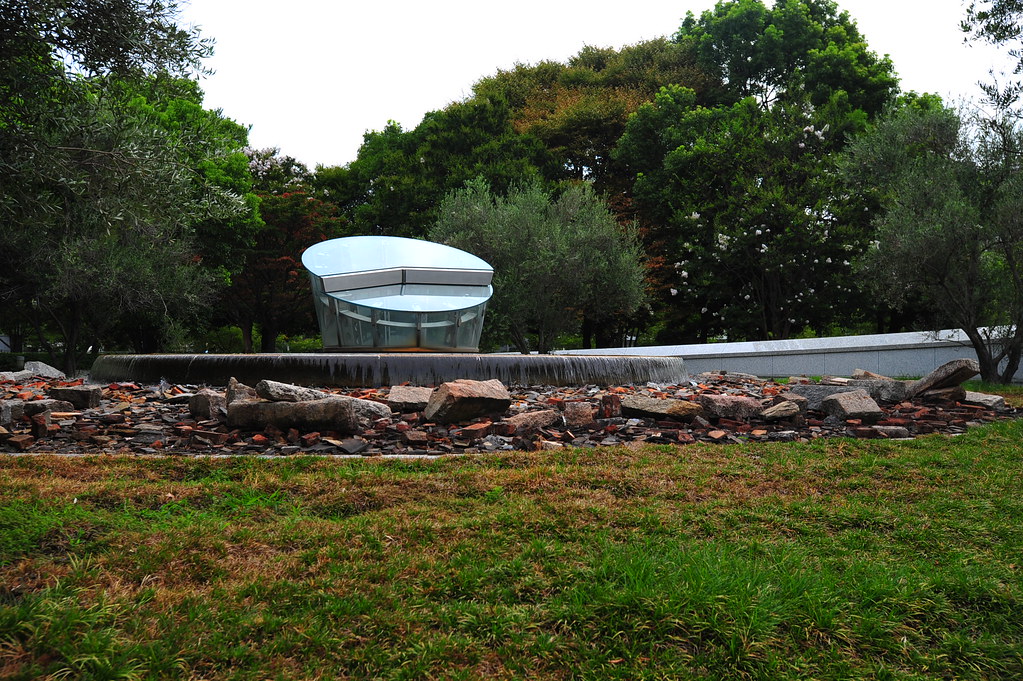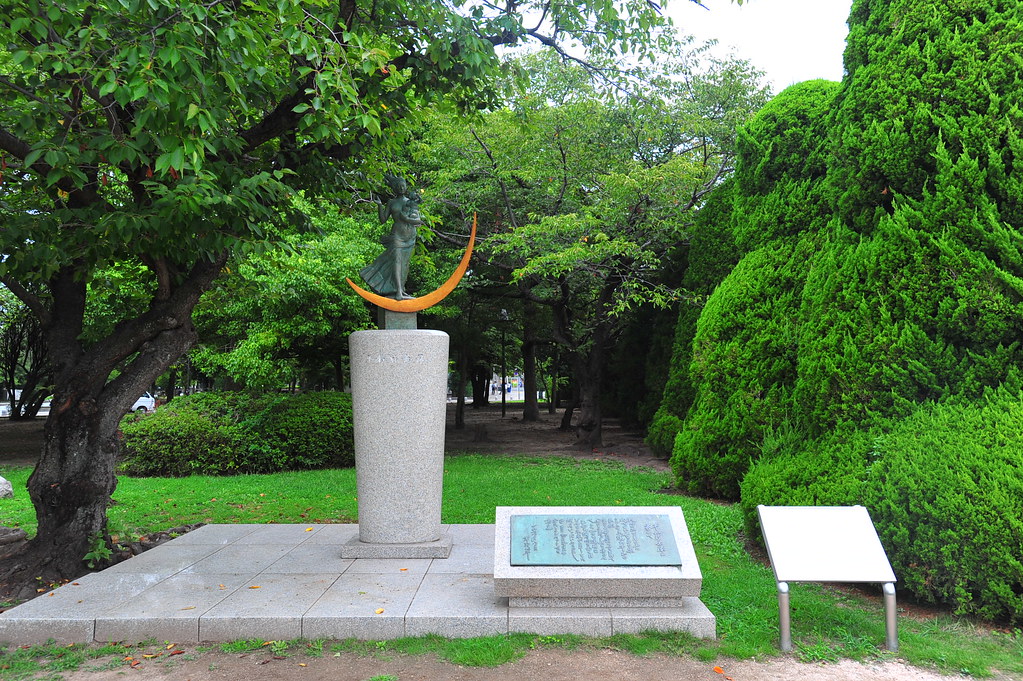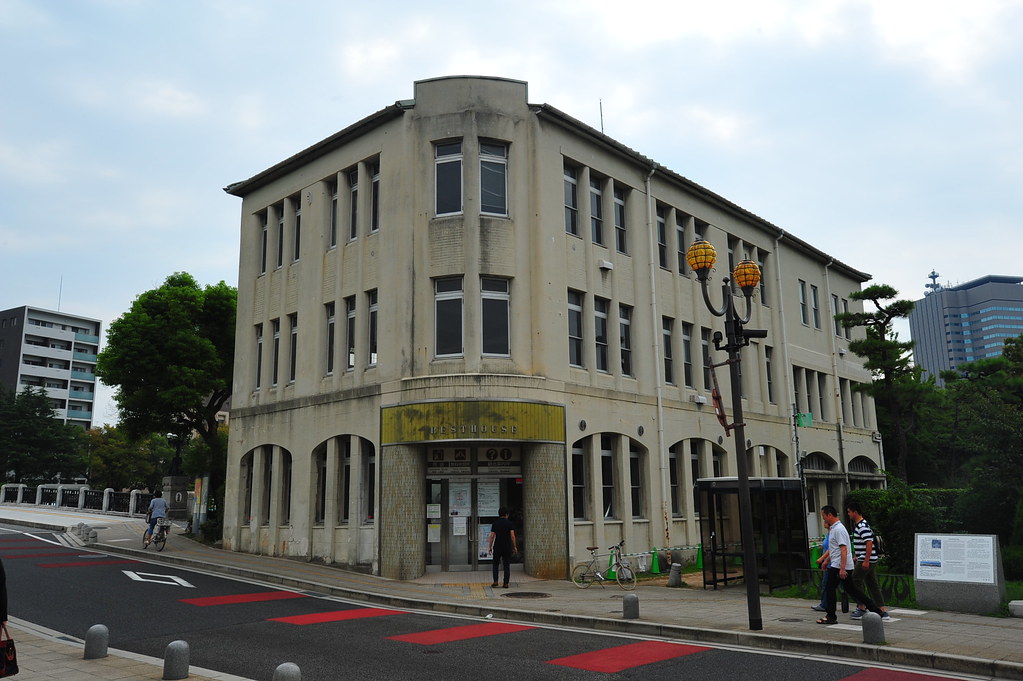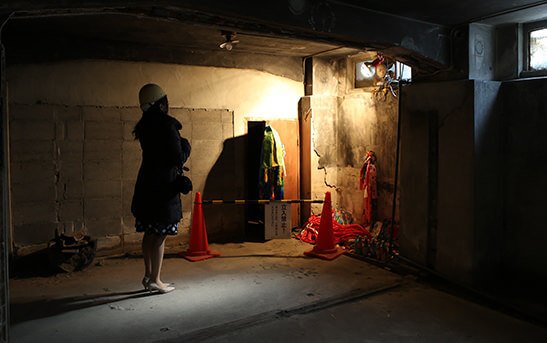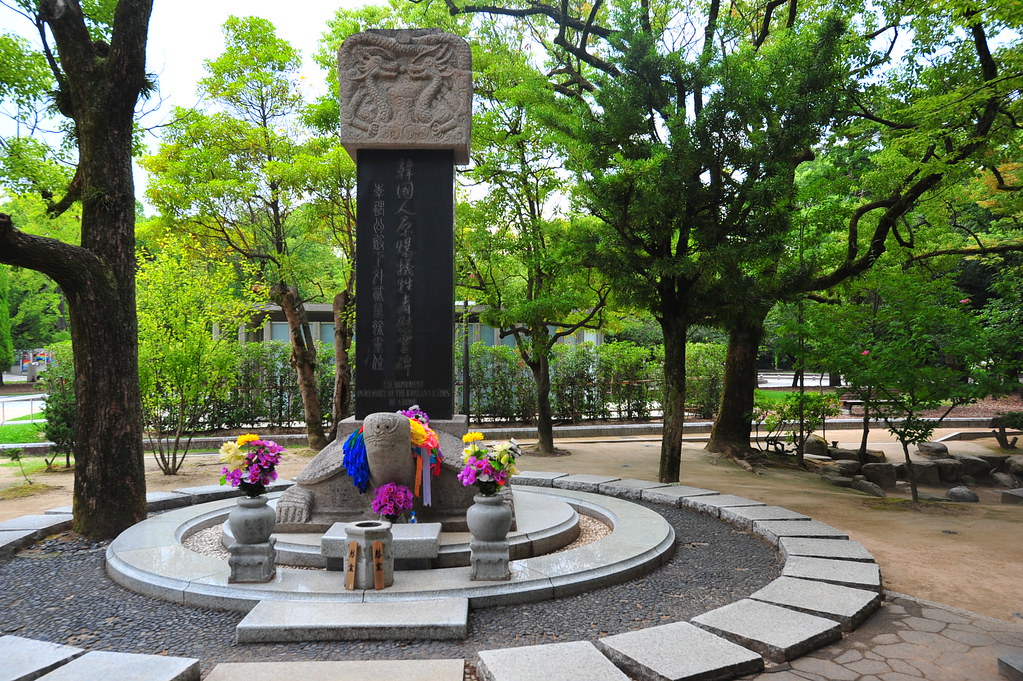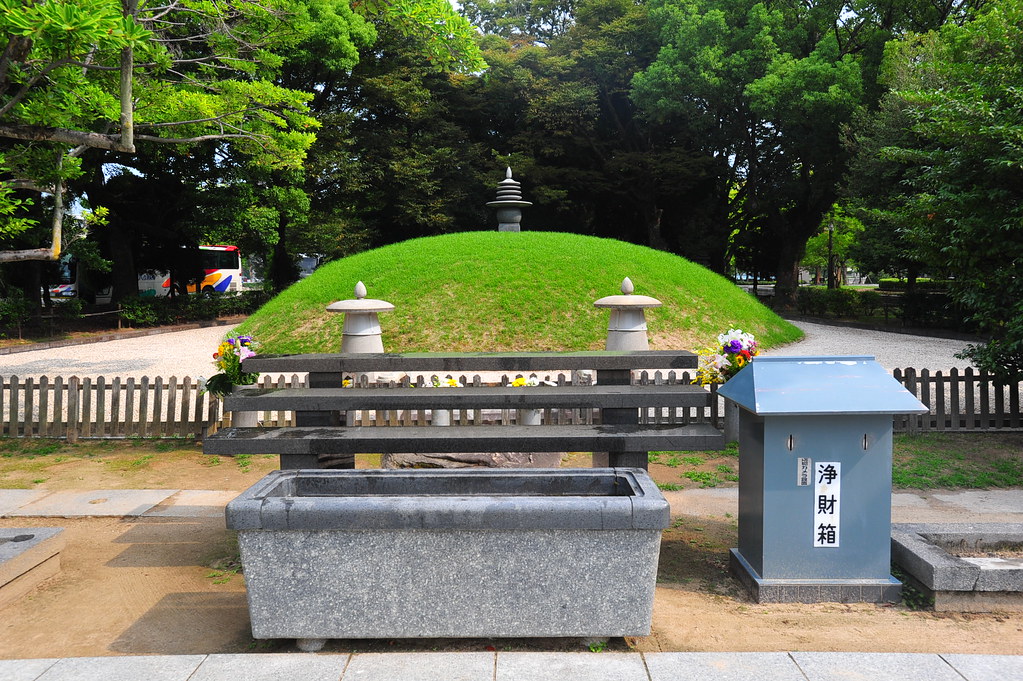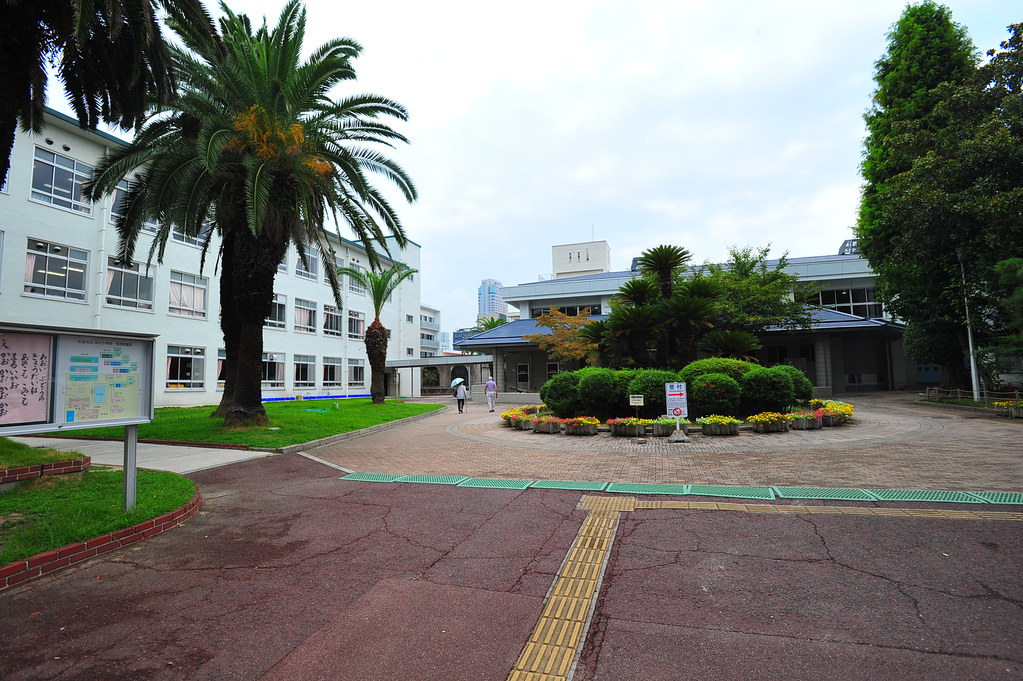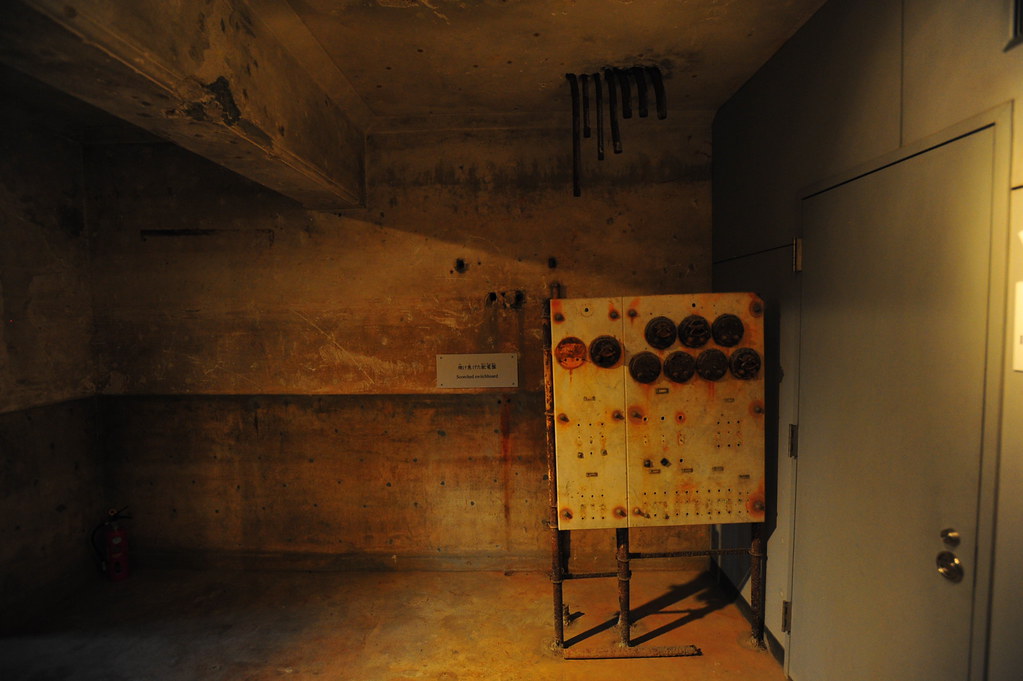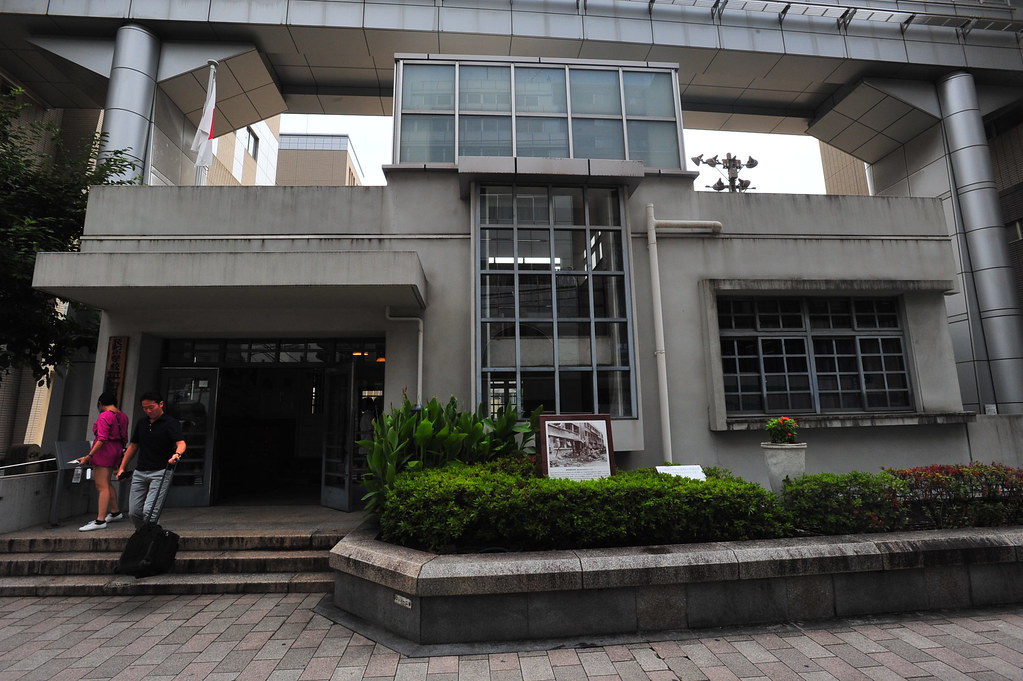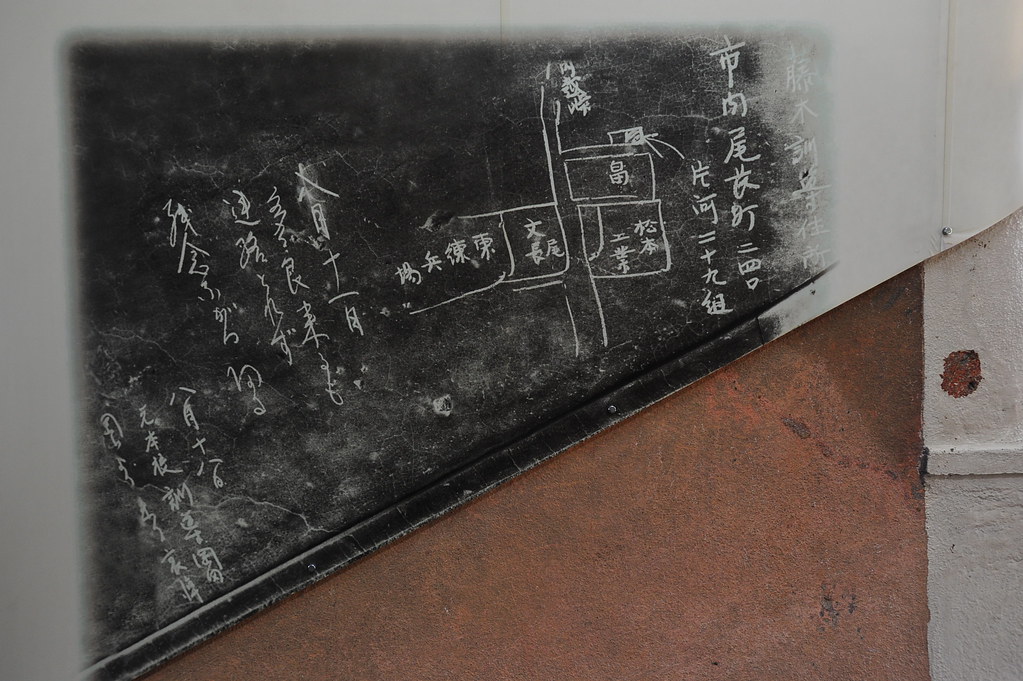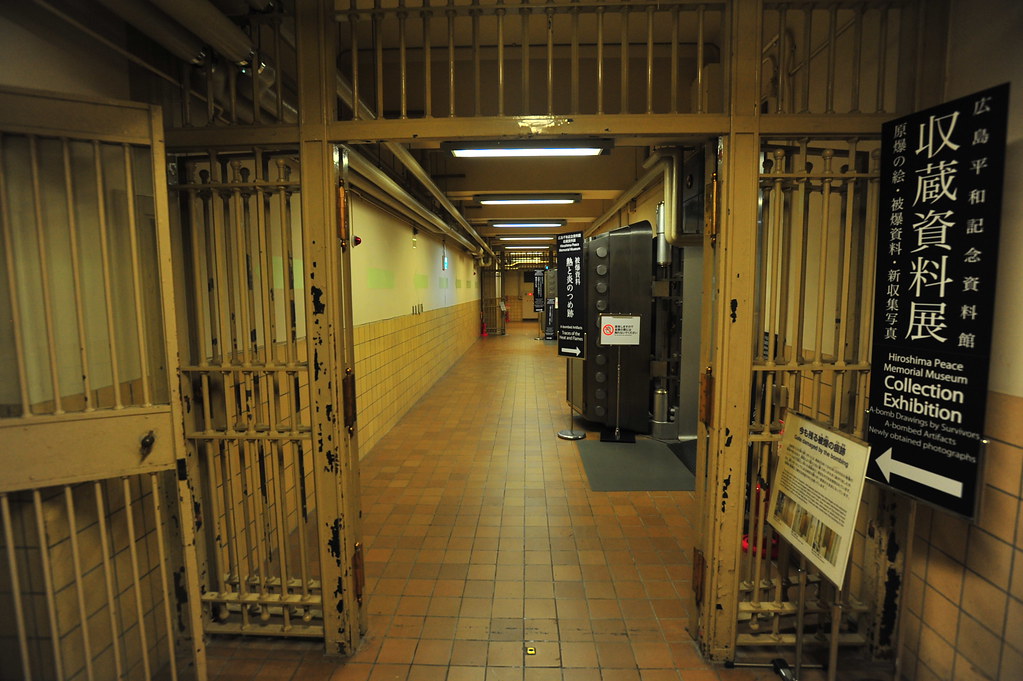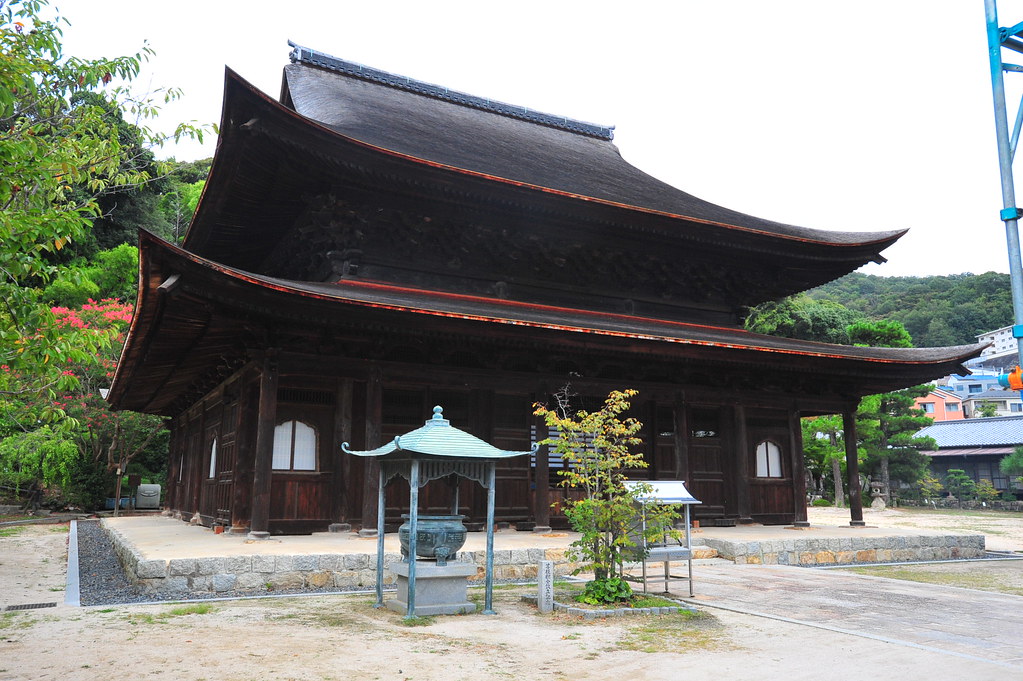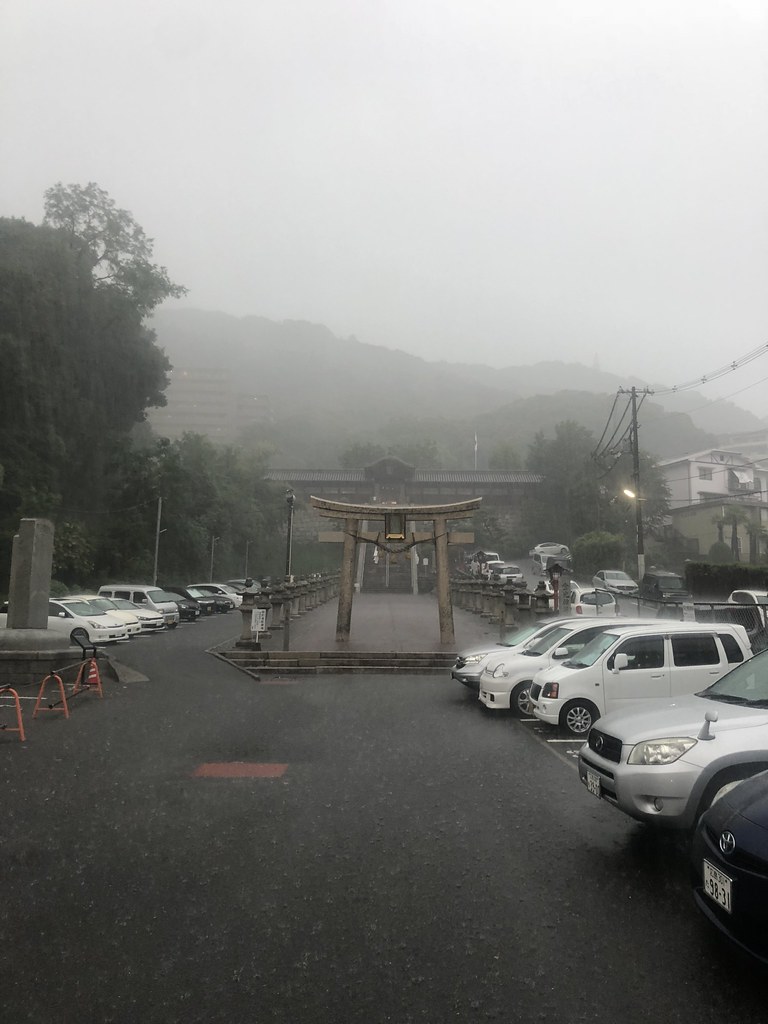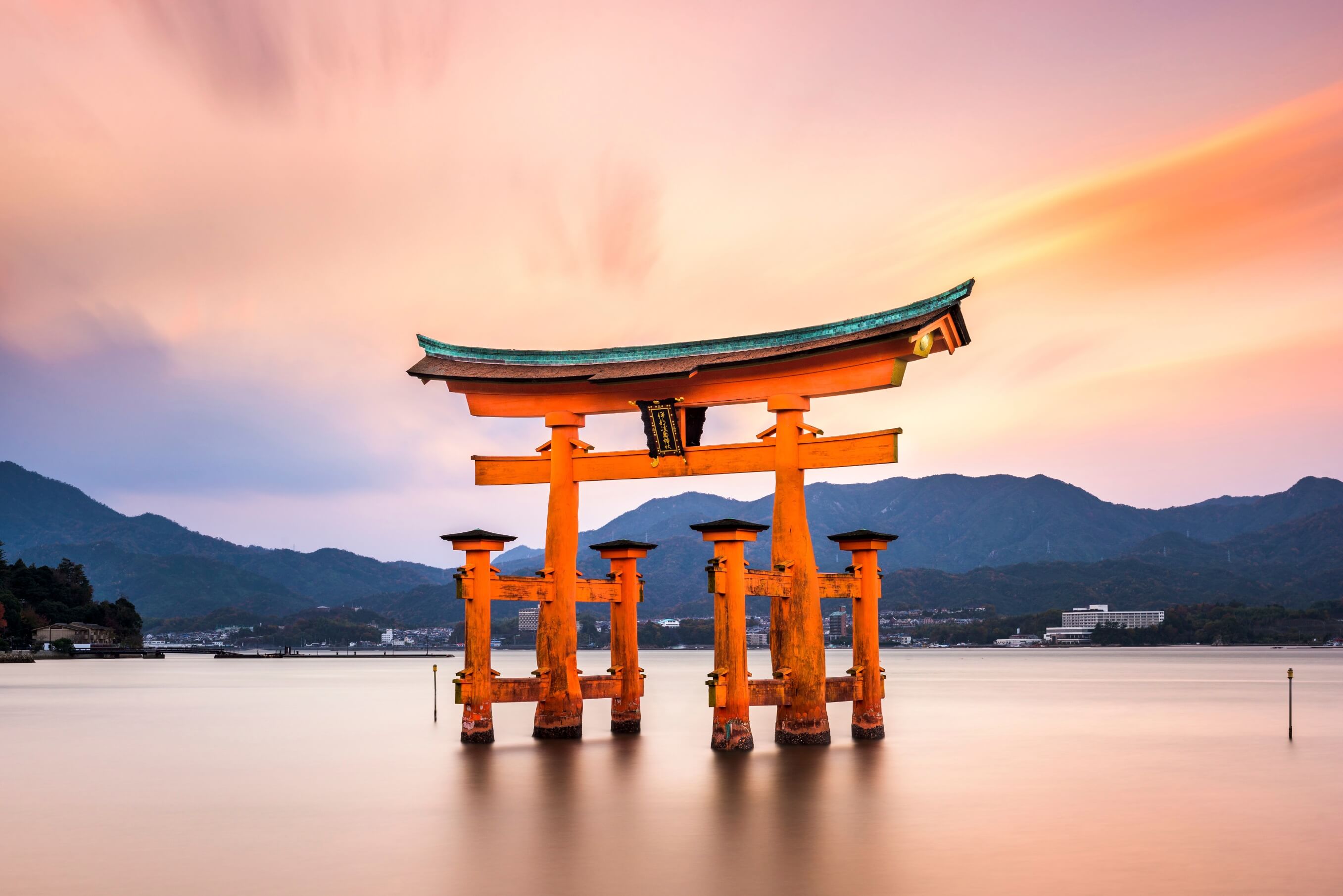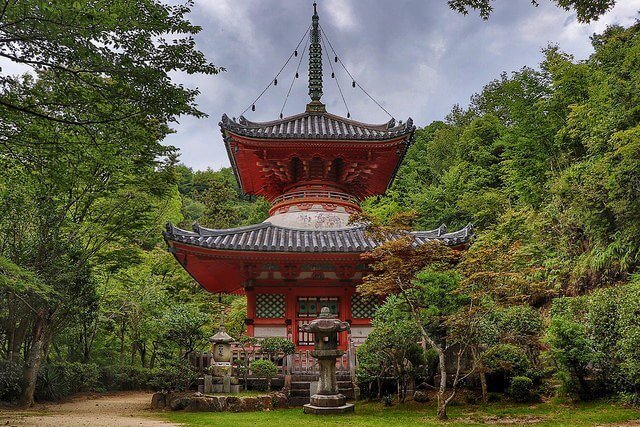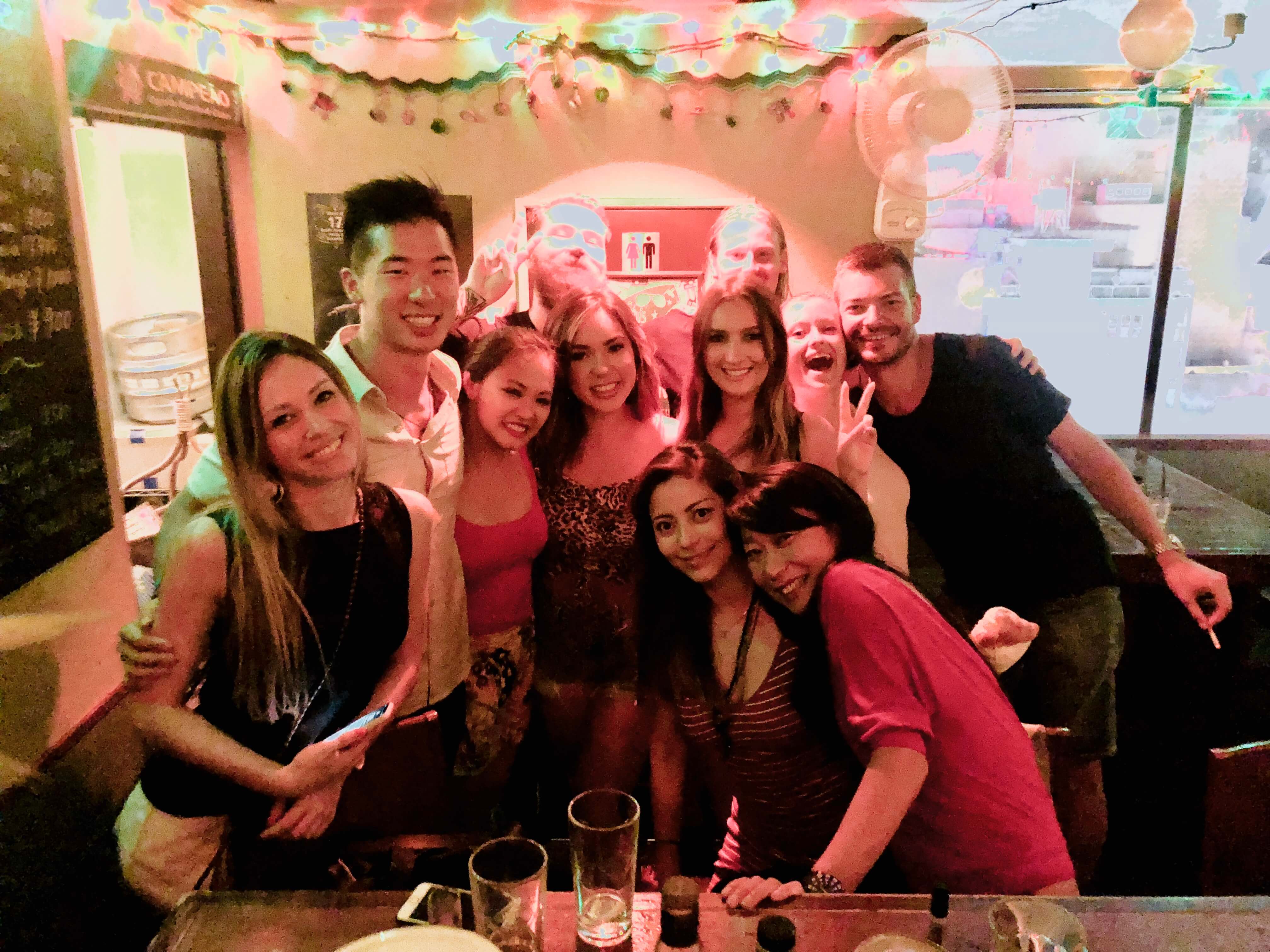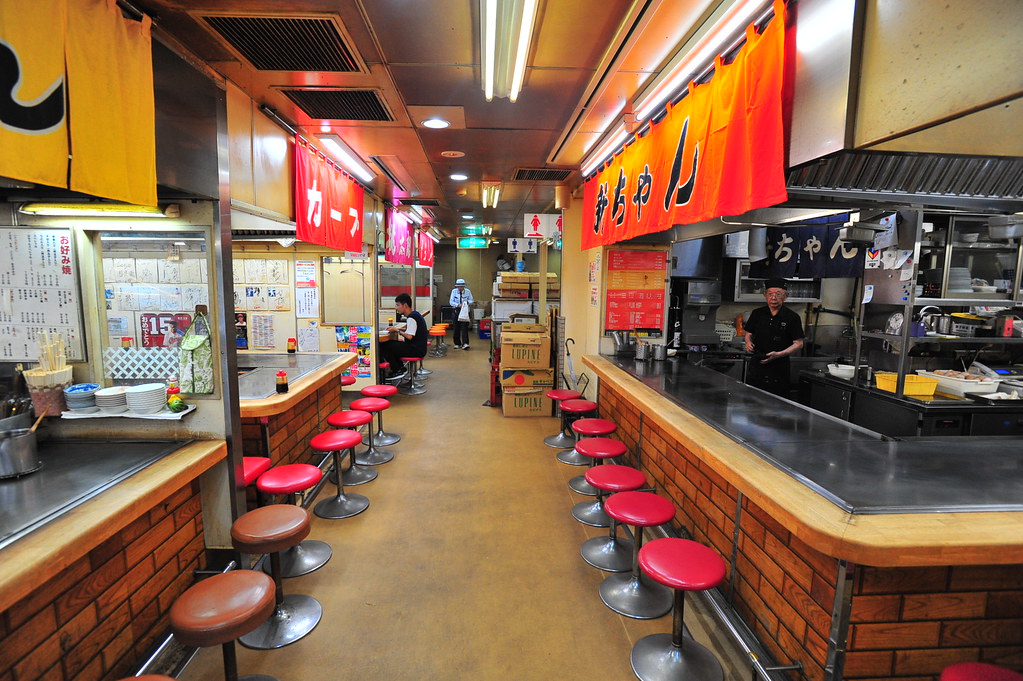After 2 days in Nagasaki, we headed northeast for Hiroshima, first boarding the 3:20pm Kamome 26 Train (which leaves hourly on the :20) from Nagasaki Station to Hakata.
We arrived on time into Hakata at 5:13pm, transferring to Platform 13 for the Shinkansen “Bullet Train” Nozomi 56, departing at 5:33pm heading in the direction of Tokyo.
Don’t fall asleep! The train only takes 2 stops, aka one hour to cover 282km (or 175 miles) to reach our destination of Hiroshima. Our train was literally was moving at the speed of 282km/hr (175mph)!
We thus arrived on time at 6:34pm, with the whole journey from Nagasaki to Hiroshima costing about 12,000¥ per person and taking us about 3 hours.
From here we took Bus no. 24 out 7 stops (180¥ one way) to our hostel, Hostel Mallika, located right next to the Hiroshima Peace Memorial Park. We then settled in and Donna and I headed out for some night exploration of the park about a 3 minute walk away while Trish said she would take it easy/sit out for the rest of the trip until Kyoto, citing to what I suspect now could be an occult fracture (!). I suggested that she visit a clinic and finally get that foot x-rayed, but at the time of posting Trish would poll her social media hive to decide whether to get it checked here, or wait until she returned home. So if you’re reading this, go support/encourage her in getting this checked earlier than later (after all, that’s what Charlotte did when her toe got fractured in the film “Lost In Translation”)!
As Donna and I headed out it began to rain lightly, which made a perfect backdrop to the eerie nature of the area considering what had happened here 74 years ago on August 6, 1945.
The Cenotaph for the A-Bomb Victims was the first thing we saw. It features a stone chest in the center that acts as a registry of every victim of the atomic bomb, regardless of nationality. Names are still added when people die from diseases related to the radiation of the bomb. The Japanese inscription reads, “Let all the souls here rest in peace, for the evil shall not be repeated.”
The arch also artfully frames the A-Bomb Dome in the distance, as well as the Flame of Peace, which will reportedly burn until the dismantling of the last nuclear weapon.
Walking further north, we finally came upon the skeletal remains of the A-Bomb Dome, the most recognizable symbol of the atomic bombing in Hiroshima.
Designed by Czech architect Jan Letzel in 1915, the building once stood out as the Hiroshima Prefectural Commercial Exhibition Hall in a city devoid of any other European architectural influences. Although the dome was destroyed and the people inside were killed by the heat of the atomic blast, the inner walls has remained largely intact.
During the cleanup afterwards, this structure was first left alone simply because it was much more difficult to remove than other debris in the area. It continued to stand until it was finally designated a UNESCO World Heritage site in 1996.
Around the corner to the east is the Memorial Tower to the Mobilized Students, dedicated to the 6300 students working in the munitions factories before they were killed by the atomic bomb.
One block east from here around the corner is the Hypocenter, designating the exact spot where the atomic bomb detonated 600m above.
As the other sites in the park were closed, at this point we decided to return to the hostel and sleep in a little early.
The next morning we had a quick breakfast and returned to the park, starting by entering the park again through the Gates of Peace, which were installed by a pair of French artists in 2005. The word “peace” is written in 49 languages on the gates and the sidewalk, with the ten gates representing the nine circles of hell from Dante’s Inferno and an extra level of hell created by the atomic bomb.
Past the gates as the park begins is the Fountain of Prayer and the Statue of Mother and Child in the Storm. Both are currently undergoing earthquake-proofing so all we saw was tarp and scaffolding. So we walked west right by the fountain and entered the Hiroshima Peace Memorial Museum, which opened at 8:30am.
Although the entry fee was once 50¥, it’s now 200¥ to support the current renovations.
Like the museum in Nagasaki, this one is also a doozy. We spent 45 minutes here taking it all in.
A few paces north of the museum is the Hiroshima National Peace Memorial Hall for the Atomic Bomb Victims. Entry is free.
The Peace Statue is right by the cenotaph.
If you need a break from all of this, the Rest House of Memorial Park is a few paces northeast from the Peace Statue. Formerly the Taishoya Kimono Shop at the time of the atomic bomb attack, only one employee who was in the basement at the time, survived.
If you’re still curious and not completely wiped out at this point, you can visit that very basement — which has been unchanged since the explosion — if you register at the information desk inside. However, the building is currently undergoing renovations, so we were unable to check that out.
Continue onwards to the Children’s Peace Monument. In a poignant moment, we were fortunate enough to witness a crowd of visiting schoolchildren praying by it.
And the Korean Atomic Bomb Victims Cenotaph is a few paces west, dedicated to the tens of thousands of Korean forced laborers who lost their lives in Hiroshima.
Right north to it lies the Atomic Bomb Memorial Mound, where the ashes of 70,000 unidentified or unclaimed bomb victims are buried underneath. Services are held in their memory on the 6th of every month.
And at the very north of the park you can ring the Peace Bell.
Crossing the bridge to the west, we quickly visited the Honkawa Elementary School. Out of the 400+ people in this building, only 1 student and 1 teacher survived the atomic bomb.
A new school has been built since then, but this section of the original structure has been kept as a museum and the basement has been preserved since the explosions. Free entry as long as you register at the main office.
We then walked east of the park to visit the Fukuromachi Elementary School. Like Honkawa, part of the original school building that survived the bomb is now a museum.
Survivors here used the school’s chalk to leave messages for lost friends and family members on its blackened walls. Free entry.
Right next to Fukuromachi one block over is the Former Hiroshima Branch of the Bank of Japan. Other than the A-bomb dome, this is Hiroshima’s other best-known pre-bomb structure.
Only 380 meters from the bomb’s hypocenter, the exterior walls remained intact while all 42 people inside the bank were killed by the heat of the blast. Remarkably, the bank reopened and was back in service only two days after the bomb and continued operating until 1992 when it was acquired by the city.
The basement vaults have been converted to exhibits detailing another side to the atomic bomb explosion. Entry is free as well.
From there we walked up north to Hiroshima Castle. Although the original 16th century 5-story castle was destroyed by the bomb, the reconstructed museum boasts a view from the top that might be worth the 360¥ entrance fee.
The Gokoku Shrine is on the castle grounds near the entrance, having been rebuilt after the atomic blast and now serves as the center for annual Shinto ceremonies.
Feeling famished at this point, we grabbed lunch at Okonomiyaki (more on this hot beautiful mess or work of art below) back downtown at Mitchan. There’s one conveniently located in the basement floor of the Fukuya Hatchobori Store.
After lunch we took the 230¥ Astramline tram up 6 stops from the Kencho-Mae Station to Fudoin, a serene 14th century temple that survived the atomic blast. Free entry.
From there we returned to our hostel to recharge, and then took a 2010¥ cab a long way uphill to the Peace Pagoda.
Built in 1966 and dedicated to those killed by the atomic bomb, the pagoda houses two gifts from India and Mongolian Buddhists that contain ashes of the Buddha, as well as thousands of prayer stones.
At this point dark clouds began to gather and it began to flash flood, HARD. Flashes of lightning were being followed by thunder only mere seconds afterwards. I counted a few and noticed lightning strikes were getting closer and closer.
This felt personal to me as I had been struck once by lightning 7 years ago in Mandalay: I had been standing on top a hill next to a big pagoda, and here was I once again, standing on top of a hill next to a big pagoda. Donna and I started to sprint downhill as fast as we could, umbrellas be damned.
…but not before I could get a shot of Hiroshima from the pagoda first:
Ducking under roofs of random homes every 1-2 minutes and making a mad dash downhill before taking cover again, we managed to reach the bottom in 20 minutes where we looked up and saw we had just rushed down past the atomic bomb cenotaph without noticing. Just beyond is the Toshogu Shrine.
Afterwards we took final shelter back at Hiroshima Station, where we reunited with Billy, a friend we had made at the last minute right before we left our hostel CasaNoda back in Nagasaki.
Given that the rain began to improve at this point, we collectively decided to make a run for Miyajima (Itsukushima) for sunset despite the thunderstorm.
However, this one just wasn’t meant to be. The 3 of us were shuttled back and forth between Platform 1 and 2 no less than EIGHT (no joke) times before the stationmasters announced that the JR Sanyo train to Miyajimaguchi Station (so we could catch the ferry to Miyajima) actually may not be arriving at all. Because of the heavy thunderstorms in the area, they were concerned whether it could operate safely for the rest of the evening. Nevertheless, they were able to fully refund us for our 810¥ per person roundtrip fare at the adjustment office right by the exits.
Although we had dodged typhoons and earthquakes so far on this trip, it would be a simple local thunderstorm to finally do us in. We’ll come back next time! Besides, we’re way overdue for a drink.
BTW if you’re not temple-d out at this point like we were, there’s also Mitakidera 15 minutes north of Hiroshima’s city center we thought about heading towards at the last minute. But we’ll save it for next time.
7 hours later: Hiroshima can now claim one of the weirdest, most discombobulated nights out I’ve had in a while. We started with a quick bite at a random Mexican/Japanese fusion spot that we had all to ourselves, got turned away from an all-you-can-drink beer place because they were closing down early, shrugged our shoulders at cocktail shot bar, walked over to Nagarekawa (Hiroshima’s nightlife street), got paralyzed with too many choices, finally decided on a few drinks at Tropical Bar Revolucion on the 8th floor, took everyone not in our group from that bar out for dancing around the corner, lost a few of those people on the way, had more join us on the street, tried to haggle down cover prices at the door until we finally got free cover at Club G Hiroshima, raged to hip hop until 3:30am, took the last few standing over 2 blocks to a place without an English name (バー眠り猫) for shisha before finally crashing back at our hostel at 4:30am.
But it worked out — from left to right in the photo we have Camilla who’s from Brazil living in Melbourne, me, Donna, Luke who’s from Perth, Amy and Natasha who’s from Portland, Billy who’s from Austin living in San Diego, 2 Germans we met at Tropical Bar Revolucion who also joined us, Alexandria who’s from both Lima and here in Hiroshima, and a random Japanese woman who was collateral damage from being at the right place at the right time for the photo.
What To Eat In Hiroshima
Okonomiyaki. Literally meaning “cook it as you like it” and also known as “Japanese pizza” – A savory pancake made with egg, soba noodles, cabbage, mixed in with meat, seafood or cheese that’s then grilled in layers on a hot plate in front of you. Then it’s slathered with okonomiyaki sauce, with optional extras such as mayonnaise, pickled ginger, and seaweed.
Don’t know where to get one? There’s an entire okonomiyaki theme park called Okonominura where 4 floors of dozens of okonominura stalls bid for your patronage:
Next stop: Kobe!
![]()
- At time of posting in Hiroshima, Japan, it was 29 °C - Humidity: 86% | Wind Speed: 14km/hr | Cloud Cover: clear


